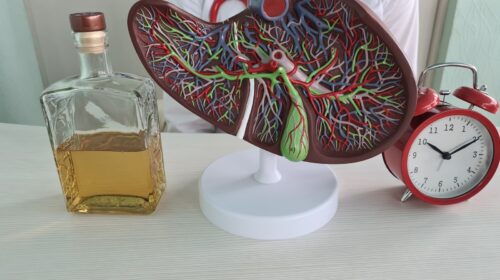[keypoints]
Tetrahydrocannabinol (THC) is the cannabinoid in cannabis that creates a psychoactive effect. While legal in some states, it can be disallowed in job situations. Drug test results using hair samples can typically return a positive result for THC as long as 90 days past last use.
The amount of time in which THC can be detected in a hair sample is impacted by several factors, including the user’s body fat and metabolic rate, where on the hair shaft the sample is taken, and frequency of use.
THC Drug Facts
THC is Tetrahydrocannabinol, a cannabinoid found in the cannabis plant. Among the over 100 cannabinoids identified, THC is responsible for the drug’s psychoactive effects.[1]
THC is imbibed when parts of Cannabis sativa or Cannabis indica plants are dried and inhaled through smoking or vaping or decarboxylated and used to make foods known as edibles.
Cannabis is currently a DEA Schedule I drug, along with ecstasy, LSD, and heroin.[2]
Immediate Effects of THC
The immediate effects of THC can include:[3]
- A distorted sense of time
- Intense mood changes
- Impaired coordination, thinking, problem-solving, and memory
- Intense sensory responses
In cases of a high dose / high potency, especially with chronic use, effects can include:
- Delusions
- Hallucinations
- Psychosis
Cannabis Side Effects

Especially when high-potency cannabis is used frequently over time, it can result in negative side effects.[4]
Physical Effects Of This Type Of Drug Use Can Include
- Cannabinoid Hyperemesis Syndrome. This is chronic, intense nausea and vomiting.
- Breathing problems. Cannabis irritates the lungs the same way as tobacco smoke.
- Cardiac issues. Cannabis increases the heart rate, raising heart attack risk, especially in people with compromised cardiac systems.
Developmental Effects Of Cannabis, Especially For Teens And Young Adults, Can Include
- Compromised brain development.[5] When someone becomes a heavy user of cannabis before the age of 25, research indicates it can negatively affect their ability to think, remember, and learn, with an average of an 8-point drop in IQ points.
Long-Term Mental Effects
When cannabis consumption is heavy and long-term, it can result in mental effects, including:
- Hallucinations and paranoia
- Intensified symptoms for schizophrenics
How Long Does THC Stay In Your Hair?
The amount of time THC can be detected in your hair varies depending on how frequently you use cannabis, your hair growth, and hair length.
Depending on the constellation of those factors, THC can be detected in your hair for as few as 7 days if you’ve only used cannabis once or for as long as 90 days if you’re a heavy, chronic user.
If you use cannabis a few times a month, a hair test detects it for about 90 days.
THC Hair Test
How It’s Done
A small sample of hair about 1.5 inches long cut near your scalp from the back of your head is sent for lab analysis.
What It Detects
Hair tests detect the presence of THC-COOH.
What Levels It Detects
Hair tests are able to detect 0.1 to 1 picogram of THC-COOH per milligram of (pg/mg) of hair.
Detection Window
The detection window varies, usually from 7 to 90 days.
Likelihood of a False Positive
A false positive from a hair test is highly unlikely.
Situational and Biological Factors That Influence How Long THC Stays In Your System
How Does Your Body Process THC?
THC enters your bloodstream either through your lungs when you smoke or vape or through your stomach when you eat it. Either way, your body converts THC through a metabolic process into THC metabolites 11-OH-THC and THC-COOH.[6] The 11-OH-THC is a psychoactive metabolite of THC.
When THC enters your bloodstream through your lungs, it quickly crosses over the blood-brain barrier, and you’ll feel its effects.
When you eat it, the THC goes from your stomach to your liver, where more 11-OH-THC is produced than if you inhaled it. Then, it enters your brain from your blood.[7] This is why ingested cannabis takes longer for you to feel its effects, but the effects feel stronger.
In your brain, THC over-activates specific brain cell receptors associated with brain function and development.
How Long Does It Take To Metabolize THC?
The length of time it takes for you to metabolize THC depends on several factors:
- Whether you smoke, vape, or eat cannabis
- Your metabolic rate. Your genetics, activity level, and body mass index (BMI) impact this rate. If you have a high BMI value, you may metabolize THC more slowly than someone with a lower one because your fat cells store THC, releasing it slowly over time.
- Your frequency of use. Frequent cannabis use builds up THC levels in your body.
- How your liver functions.
- How your kidney functions and your hydration levels.
Can You Fail a Drug Test From Secondhand Cannabis Exposure?
There is a low likelihood to fail a drug test from secondhand cannabis exposure. If, for example, you’re in a space with poor ventilation and a heavy amount of marijuana smoke, you could test positive.
Other Types of THC Drug Tests
Other THC screenings use a type of test for blood, urine, or saliva (oral fluid).
Note that if the test is specifically for THC, it’s unlikely to detect other drugs that would signal drug abuse or substance abuse, such as opiates or amphetamines.
If you’re given a comprehensive or multi-panel drug test, those substances will be detected.
THC Blood Test
How It’s Done
For a blood test for drug screening, blood is extracted with a needle from a vein and sent to a lab for testing.
What It Detects
Blood tests measure whether THC is present as well as the concentration of THC.
What Levels It Detects
Blood tests for THC can typically detect 1-5 nanograms per milliliter (ng/mL).
Detection Window
A blood test detects THC just a few hours after use. For heavy users, it may be a slightly longer period.
Likelihood of a False Positive
The likelihood of getting a false positive from a blood test is low.
THC Urine Test
How It’s Done
For a urine drug test, a sample of your urine is given to a lab, sometimes in a monitored setting.
What It Detects
Urine tests detect the presence of THC-COOH.
What Levels It Detects
Most urine tests can identify 5 to 50 nanograms of THC-COOH per milliliter (ng/mL) of urine.
Detection Window
A urine test identifies THC-COOH up to 3 to 5 days after use. For heavy users, it can be several weeks before it shows you’re clear of THC.
Likelihood of a False Positive
A urine test is more likely than a blood test to return a false positive. False positives can occur because of several factors, including:
- Cross-reactivity with prescription and over-the-counter medications, certain supplements, or foods
- Use of broad-spectrum or full-spectrum CBD
- A contaminated sample
- Exposure to second-hand cannabis smoke
THC Saliva Test
How It’s Done
A swab absorbs your mouth to collect saliva for lab analysis.
What It Detects
Saliva tests detect THC only, not metabolites.
What Levels It Detects
Typical saliva tests identify 5 to 10 nanograms per milliliter (ng/mL) of THC.
Detection Window
Saliva tests detect THC taken in the last 24 to 48 hours at the time of the test.
Likelihood of a False Positive
While they’re more likely than blood tests to show a false positive, saliva tests are less likely than urine tests to do so.
| Drug Test | Detection Window |
| Blood Test | A few hours after cannabis use |
| Saliva Test | 24 to 48 hours after cannabis use |
| Urine Test | Average of 3-5 days, up to several weeks for heavy cannabis use |
| Hair Test | Varies primarily with usage, from 7 days to 90 days for heavy long-term users |
Cannabis Addiction Treatment
As laws change, attitudes toward recreational cannabis are changing. Some believe it’s harmless. It’s not. It can be abused just like alcohol, another legal drug.
If you have a cannabis addiction and stop using it, you’ll detox from it and may experience withdrawal symptoms. It’s important to have professional support during this time.
Want Negative Drug Tests For Life? We Can Help.
If you or someone you care about has a problem with cannabis, talk with a healthcare professional experienced in recovery.

























